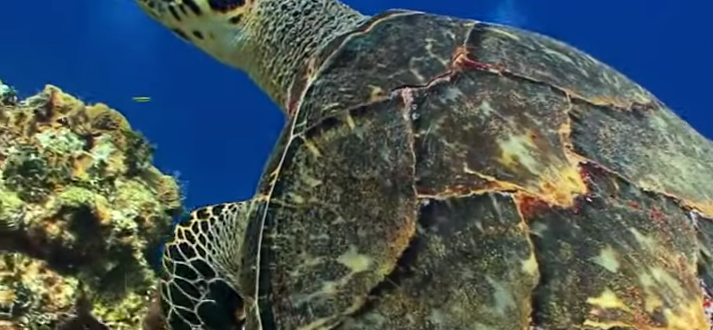
Sea turtles are like marine dinosaurs
Sea turtles have existed since the time of the dinosaurs. The earliest marine turtle lived about 120 million years ago. The Desmatochelys padillai was 6 feet (183 cm) long and looked like modern turtles, as it also had a carapace (hard shell) and paddle-like limbs.
Today, there are seven species of sea turtles. From smallest to biggest, they are: Kemp’s ridley, olive ridley, hawksbill, flatback, green, loggerhead and leatherback. The smallest species can reach 2.3 feet (70 cm) long and weight 88 pounds (40 kg), while the leatherback can grow to 6 feet (180 cm) and weigh up to 1,100 pounds (500 kg). It’s larger than the fossils found of its prehistoric ancestor, the padillai.
The largest marine turtle known was a leatherback turtle that washed up on a beach in Wales in 1988. It measured 8 feet (2.5 m) and weighed 1,980 pounds (900 kg)!
Anatomy and feeding habits
Sea turtles don’t have teeth. They have beaks, which are made out of keratin, the same thing our nails are made out of. Turtle shells consist of over 50 bones fused together. So, this literally means they wear their bones on the outside. Also, their bones are light and spongy, which helps them float.
Marine turtles live in most of the world’s oceans, apart from cold polar seas. They tend to spend their lives in relatively shallow continental shelf waters. They might not be voracious killers like sharks, but some turtle species are very important predators that help to keep ocean food chains healthy.
For example, hawksbill turtles eat lots of sea sponges, which would otherwise out-compete reef-building corals. So, the turtles help to protect the coral reefs, which are crucial for the survival of many other creatures.
The leatherback turtle largely eats jellyfish, which helps stop jellyfish from depleting fish stocks. And that benefits other animals in the food chain, as well as people.





Recent Comments